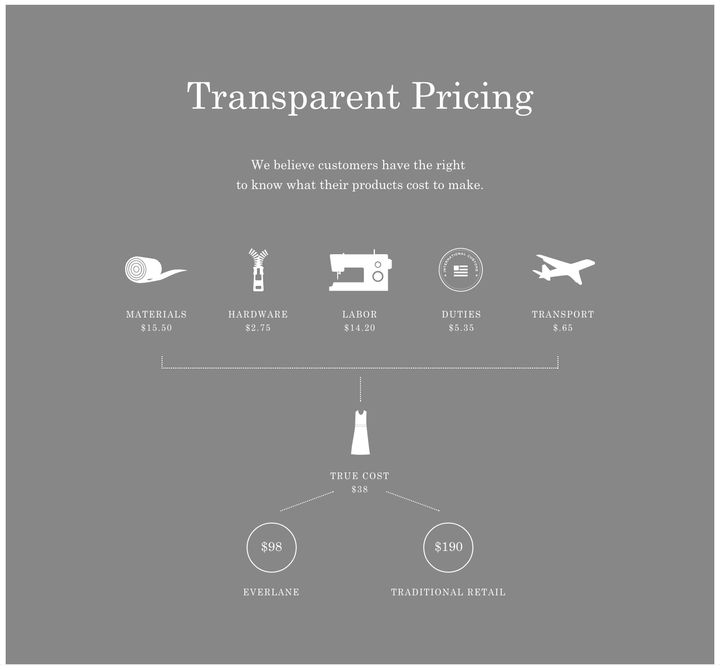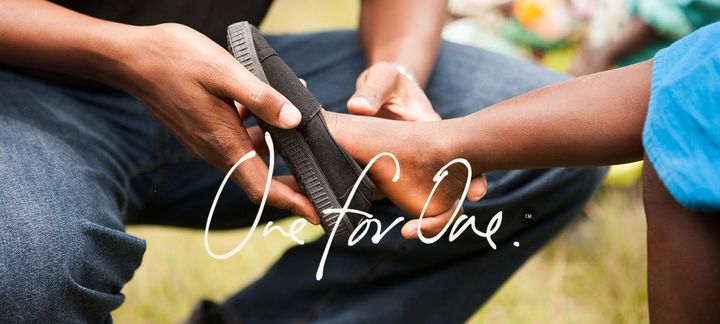
By Jessica Hemmer and Tommy Hemmer
The tides of change are upon us. For too long, companies around the globe have put profits before people and the planet—treating sizable profits and positive impact as exclusive concepts. Yet, a movement is emerging: a wave of consumers calling for a flip to the system, a change to the current way of doing business.
Across the globe, and in almost every industry, this point of view is finding its footing. Companies are beginning to change the way they do business. And, by and large, these changes are driven not by the companies themselves, but by their consumers. Calls for better business practices are changing the way product lifecycles are run, and we are excited to see this shift take hold in our industry of focus: the apparel industry.
CONSUMER WORLDVIEW
Rarely do you find a company that makes a change simply because it is better for society or the environment. By and large, the goal of for-profit organizations is to make money. So, to create real change in the marketplace, consumers must act as the driving force and vote for change with their dollars.
Recent shifts in societal values have caused an increased demand for ethical design practices in business development and product creation. More and more, we are seeing a call for a move towards emancipative values and prosocial behavior. And, consumers are backing up these beliefs with changes in their spending habits.
Emancipative values put emphasis on concepts like equality, freedom, autonomy, and self-expression. They inherently reflect societies’ move towards liberalization. Societies that support emancipative values often support citizens’ rights—whether they be political, civil, medical, or sexual. Prosocial behaviors include “helping, comforting, sharing and cooperation."[1] Essentially, these behaviors can be defined as actions that are intended to benefit others. As this shift continues, topics such as environmental impact, social responsibility, and shared accountability increasingly influence consumers’ purchasing practices.
BRAND TRIBALISM AND MARKET DEMAND
With the rise of social media, it has become easier for consumers to find individuals who share their beliefs, which has resulted in the rise of consumer tribalism. The concept of neo-tribes is best described as a return to social micro-groups, building belonging through shared rituals, emotions, beliefs or consumption practices.
By banding together, these individuals can create something larger than themselves. As these tribes develop, they establish the ability to collectively bargain with companies. As more individuals call for a specific change in a company, the more likely that company will act to resolve a given issue.
These tribes, in a sense, become the target markets for corporations. And, in most cases, rise from the purchasing demographics that already exist. In the apparel industry, it is even more apparent which tribes people belong to. Each brand stands for something, and what brands you wear can speak volumes about your beliefs.
ETHICAL DESIGN IN PRACTICE
Overall, the market is making moves toward ethical design—the act of creating products, services, or organizations with a moral purpose. To design ethically, companies must create a design ethos and business model (pulling direction from consumer tribes) that focuses on improving the human situation while doing as close to no harm as possible.[2] These brands develop products, services, or systems that put the people and environments involved in their development lifecycles first. Through radical transparency, triple bottom line accounting practices, and social activism, apparel brands actively respond to the demands of consumer tribes.
Radical transparency, which gives consumers access to the typically hidden details of the supply chain and costing structure, allows consumers to make informed decisions about how their purchases effect both society and the environment. In the apparel industry, the company that best exemplifies these business practices is Everlane, whose tagline reads “Modern Basics. Radical Transparency.” They have built a trustworthy and honest relationship with their consumers by laying bare the details of who they are manufacturing with, where their materials are coming from, and the true price breakdowns of product development—giving the consumer all the information they need to make ethical purchases.

Triple bottom line accounting refers to businesses that measure their success through their effects on people, the planet, and profits. “This differs from traditional reporting frameworks as it includes ecological (or environmental) and social measures that can be difficult to assign appropriate means of measurement.”
B-Corps are for-profit companies certified by the nonprofit B Lab to meet rigorous standards of social and environmental performance, accountability, and transparency—looking at how a company performs regarding their effects on the environment, their workers, their customers, how they interact in their community, and their overall governance practices. Patagonia is a shining example of what a B-Corp should be. Each year, Patagonia works diligently to create an inclusive company culture that takes care of its workers, backs environmental initiatives around the globe (see Bear’s Ears), and does so while mindfully growing their market share and profits.

Social Activism can take many forms in for-profit companies, but in our opinion, no model is making more of a direct impact around the world than the ‘One for One’ model, wherein for each product a consumer buys, an identical product is donated to a charitable cause. TOMS is a company that was built on this mindset—where for every pair of shoes purchased, a new pair of shoes was given to a child in need. What began as a simple idea has evolved into a powerful business model that helps address needs and advance health, education, and economic opportunity for children and their communities around the world. And, awesomely enough, TOMS has seen financial success, which legitimizes their activist framework. In August of 2014 the private equity firm Bain Capital LLC acquired a 50 percent stake in TOMS, and the “one for one” footwear company is now valued at over $625 million.

A BETTER WORLD FOR US ALL
The purpose of any business should be to make the world a better place—whether through products, services, technical advancements, or job creation. Sizable profits and lasting positive impact are not exclusive ideas—but rather two outputs that need to be measured side-by-side to determine the true success of a company. As consumers continue to unite and stand up for what they believe in, companies cannot help but take notice and make the changes that are being demanded by their customers.
[1] Daniel Batson. Handbook of Social Psychology
[2] Robert Cooper. About Face
—
Jessica Hemmer, a speaker at the 2017 Love Summit, is founder and creative director of Hemmer Design, an apparel design consultancy that specializes in strategy creation, trend and market research, apparel design, and product development—all through collaborative methods that focus on cross-functional teamwork.
Receive $200 off #LoveSummit2017 business conference tickets until Sept. 1: lovesummit2017.eventbrite.com.
